#Tamoachan
Photo

Arriving in lost Tamoachan with the original pregenerated tournament characters: “There are three: Cair, a magic-user and thief by trade, with a price on his head; Myrrha, a banished cleric who seeks escape from her former colleagues; and Rhialle, a barbarian fighter, outcast of his people.” (Erol Otus, from the back cover of AD&D module C1: The Hidden Shrine of Tamoachan, TSR, 1980)
#D&D#Dungeons & Dragons#Erol Otus#The Hidden Shrine of Tamoachan#wizard#dragon#Tamoachan#illusion#magic spell#magic user#mage#adventuring party#jungle#ruins#pyramid#dnd#Dungeons and Dragons#TSR#1980s
136 notes
·
View notes
Text
353. Ken Rolston - C3: The Lost Island of Castanamir (1984)

The third entry in the C series of modules, with C standing for "Competition" this is a pretty short adventure which as you can imagine is meant to test your characters, originally being designed for competitive play.

What this usually means (as it did in C1: The Hidden Shrine of Tamoachan and C2: The Ghost Tower of Inverness) is a traditional meat grind dungeon where it's very likely not all characters will survive. Don't let the title of "Lost Island" lead you to think this is some kind of wilderness adventure, it very much is not. From the opening narration you are stranded on an island with your boat sinking and you find a door with some stairs leading down, the surface is wind blasted and inhospitable, which means you have to go down... down into the meat-grinder.
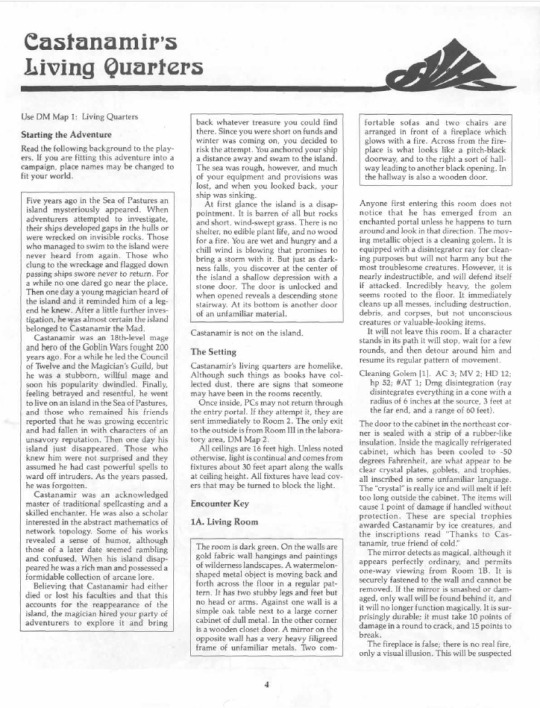
In the long tradition which started off with the classic Tomb of Horrors, you have to survive a number of linked rooms with deadly traps and occupants so that you can eventually find your way out and to freedom. Not the most original idea, but always a fun romp if you don't bring any characters you are too attached to. It is for this reason that the module provides you with premade characters that you can easily send through this.
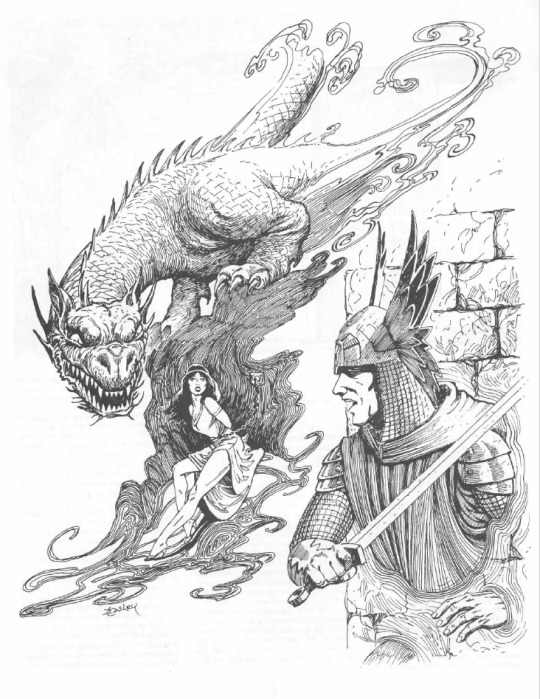
44 notes
·
View notes
Text

The Hidden Shrine of Tamoachan
12 notes
·
View notes
Text
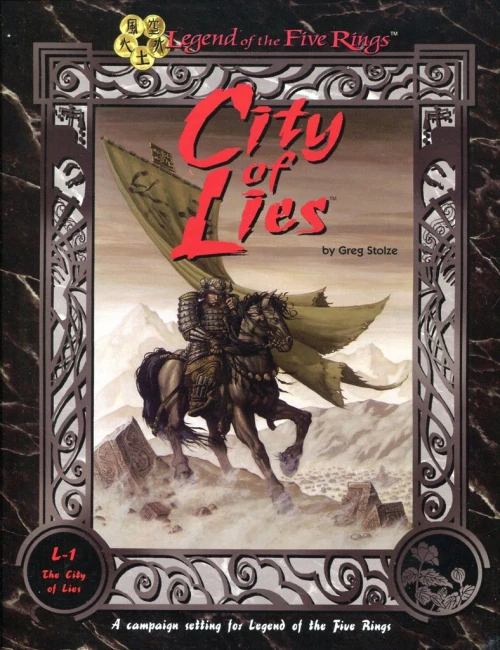
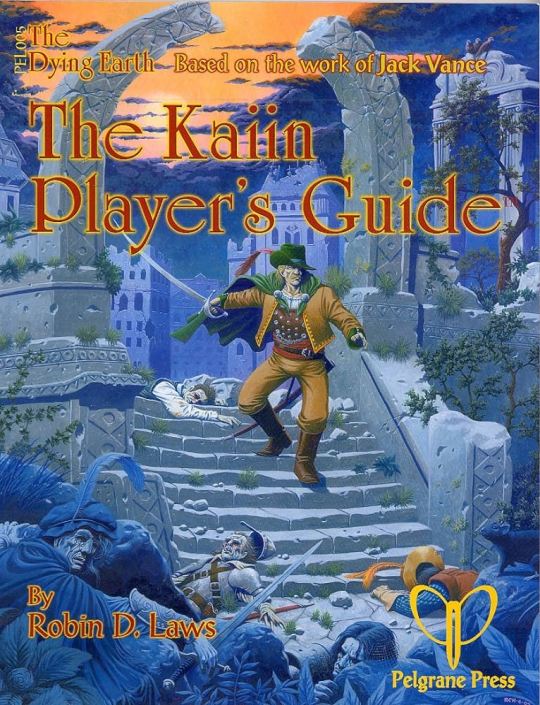

Player-Facing: Great RPG Mechanics
#RPGMechanics Week Five
I talked about letters and epistolary forms yesterday. They have a kind of immediacy to them– a direct communication from writer to reader, even if you aren’t the intended recipient. That feeling has made them a rich and useful tool in Good Society and in many solo rpgs.
The long time companion to the letter in ttrpgs has been the handout. These have been there since the earliest days– the first ones I recall came from early Call of Cthulhu modules and D&D tournament modules like The Hidden Shrine of Tamoachan. They offered in-universe objects for players to peruse– often hand drawn. These things came before Desktop Publishing and so everything had to be laid out and replicated.
I especially love objects which weren’t just summaries or images, but instead tried to look like real things from the world. Business cards, classified ads, maps, etc. It’s something of a lost art in a world of quicker online play where we can mock up battle maps and find pictures in an instant. I don’t think I’ll ever do anything quite as ambitious as my notebook for Changeling the Lost and that’s too bad in some ways.
But some games have taken the concept of player-facing materials and really delved into them. I have two old favorites in this category. The first is the classic City of Lies boxed set for the first edition of Legend of the Five Rings. This is a city campaign made up of several booklets. The basic premise is that the PCs are a new party of magistrates arriving in the city following the murder of the previous magistrate. The players are given a document which is assembled from various records and scandalous publications. It is an unreliable narrator with some things out of date and others hidden by alternate names. It’s a great companion to the campaign, even if it is a little overwhelming.
The gem of this is a smaller player-facing booklet, the testimony of the murdered magistrate. It offers more insights and clues. Importantly it is brief enough all the players can reasonably be expected to skim through it and find some direction. As a whole, City of Lies is hard to beat– and would be an amazing thing for someone to update to the latest version of the rules and setting.
The other book which sticks with me has a technique I haven’t yet seen adopted by anyone else. Robin Laws’ Players Guide to Kaiin presents a single city for The Dying Earth rpg. But it is not a GM guide. It is a player's guide filled with neighborhoods, characters, details, secrets, and rumors. It is funny, revolting, and compelling in a splendid mix– filled with folks who might help you but might just as easily strip your boots off when you pass out.
The conceit Player’s Guide to Kaiin is that the players look through and find something which catches their eye, fits with their plots, or looks worth exploring. They then tell the GM that’s what they wish to interact with and go to town, literally and figuratively. Like serious, it is great. I wish more city books existed which took this approach. Frankly it shocks me that we don’t have a guide like this for Eversink from Swords of the Serpentine.
I’m pretty sure you can draw a line from Kaiin to another Robin Laws’ masterpiece, The Armitage Files. That offers an improvisational campaign structure built around a series of ten documents. All of these seem to come from a messed up future, written by the PCs patron apparently. They tell of terrible things to come. They offer hooks, names, and incidents which the players can choose how they wish to explore them.
There are several brilliant aspects to this approach. They feel like old-school handouts with different formats, handwriting, and voice. There’s a sense of a chronology to the dissolution of the author. That’s wonderfully complicated by the fact that these letters can be presented in any order– with that basic choice shaping the play.
Importantly the letters are tight– one or two pages iirc– which means that every player can look at a copy and work through it. I love the latter player-facing full document innovation of Dracula Dossier, but that’s an overwhelming text for all the players to work through. It requires full buy-in from the group– otherwise you get the same quarterbacking problem that plagues co-op board games. Armitage also provides a plain-text version of each document which really helps at the table.
I think there’s lots of room for interesting, rich, player-facing stuff today. It doesn’t have to be massive– in fact I think these things being smaller and/or easily broken into chunks for players to work through. The trick is to make these things actionable: presented in such a way that players can immediately find cool things they want to do on any page, rather than having to read through the whole of a book.
2 notes
·
View notes
Text
0 notes
Photo


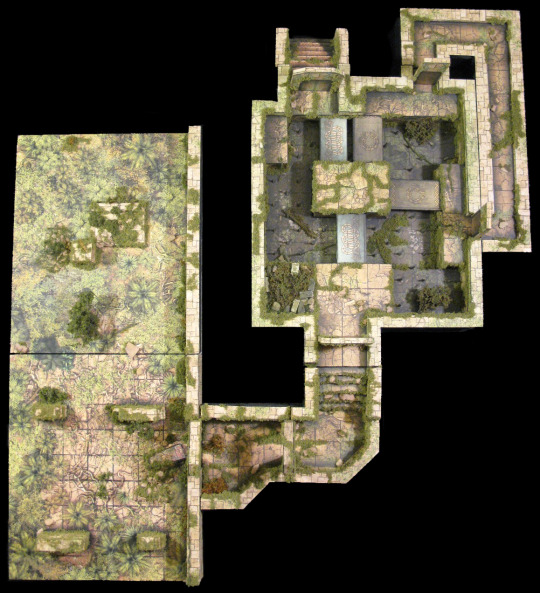





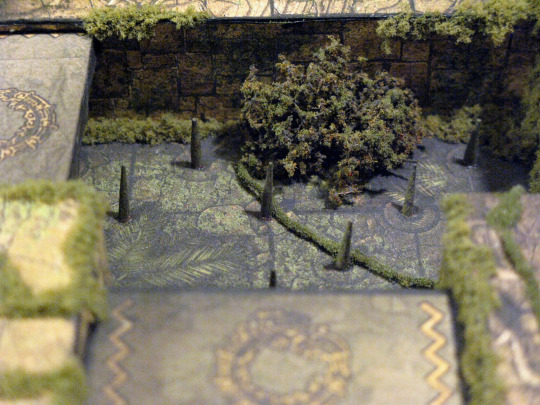

Hello all:
Let me start by apologizing for this being a long post and a big photo dump.
So I have been trying to stay sane during these last almost two years by taking up a hobby to keep my hands and mind busy. I used to be a model railroader so I had a lot of supplies sitting around so about a year ago I decided to craft a c. 25mm tabletop model of the classic TSR AD&D module C1 The Hidden Shrine of Tamoachan by Harold “Wisconsin” Johnson and Jeff "Duck" Leason as a dedicated set of dungeon tiles made out of foam core, paper, and standard flocking and terrain materials.
After a good time of learning various techniques and skills I decided to model the whole thing in the style of DM Scotty’s 2.5D method, along with techniques taught by CSP Kris over at Crooked Staff Terrain, using amazing art from Joe and Sarah Bilton at Heroic Maps.
I redesigned the dungeon slightly to address minor issues here and there or to solve some issues of logic. After this I started making all the art for all the tiles level by level, and adding two new levels to be past where a blocked staircase is in the original.
Then I sat down and started to make the tiles, this is done by printing out the tiles on standard sticker paper and pasting it down to the crafted foam core shapes. Various life matters got in the way and it has taken me a year to finish the first level I started the new “Side Entrance,” But here it is finally.
I hope you all enjoy it, and as always polite comments, critique, and criticisms as always welcome.
P.S.: If you are interested here are links to all the people I learned from or who’s products I use, why not give them a look and some love.
DM Scotty: https://www.youtube.com/user/thedmscraft
Crooked Staff Terrain: https://www.youtube.com/channel/UC1cnHiqtsuMk9NwJNj8SmpA
Heroic Maps: https://www.drivethrurpg.com/browse/pub/5371/Heroic-Maps
#texas jew#my life#model making#tabletop gaming#papercraft#hidden shrine of tamoachan#ad&d#dungeons & dragons#Dungeon tiles
34 notes
·
View notes
Photo
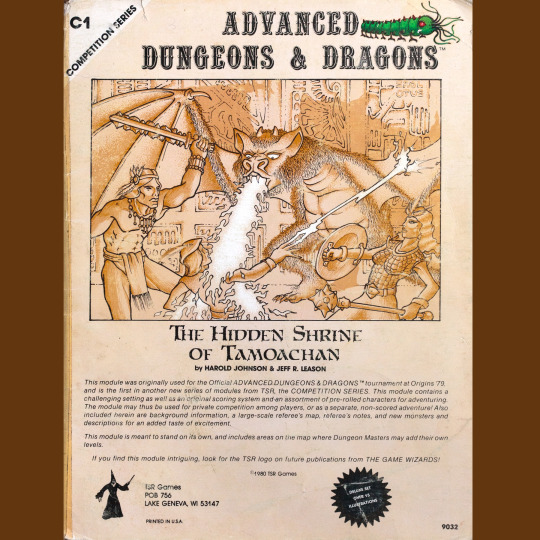
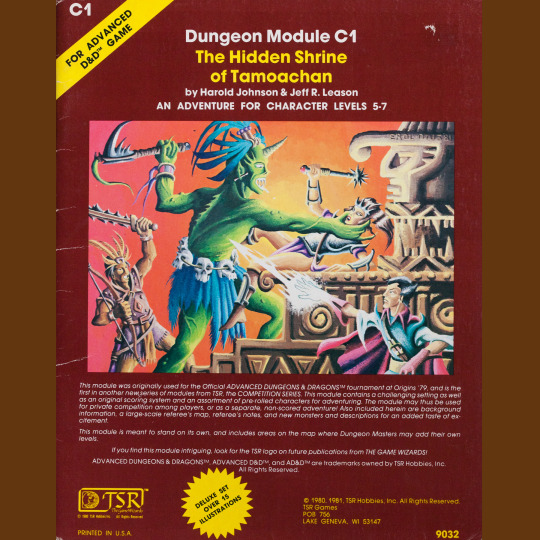
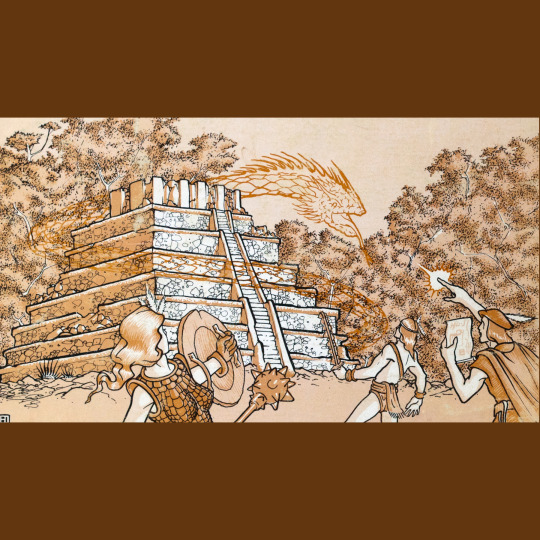
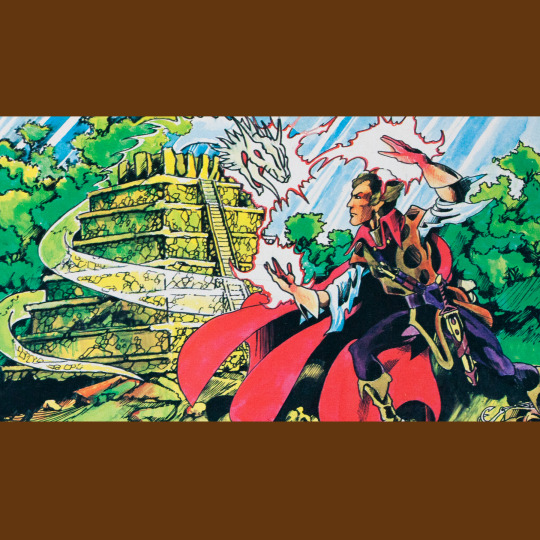


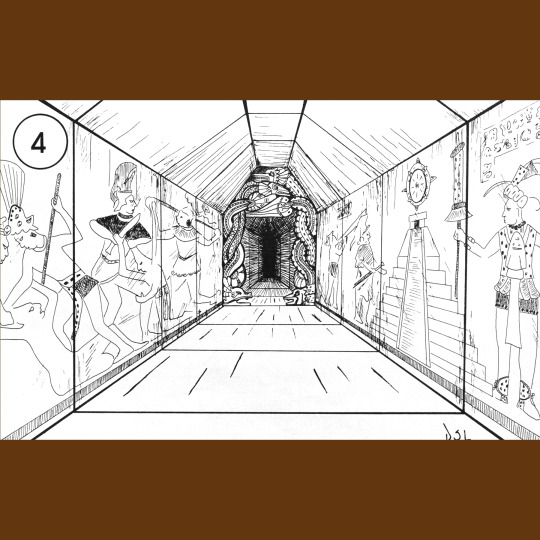



This is C1 – The Hidden Shrine of Tamoachan (1980, 1981). The original printing was provided to me by my friends @nobleknightgames.
The “C” stands for Competition, because, like previous D&D modules, they were used for tournament play – this one debuted at Origins ‘79 and the original loose-leaf version released for sale there has since become one of the rarest D&D publications. Unlike other modules up to this point, Hidden Shrine contains all the bits required for tournament play – the pre-gen characters and the scoring system. Even laid out in front of me, the idea of playing D&D competitively is still pretty baffling, but I am from a different time.
The adventure itself is a detailed dungeon crawl in a previously unexplored region of Greyhawk that, as you can tell from the art, has a heavy Mesoamerican influence. It has a lot in common with S1 – Tomb of Horrors in that it is less about combat and more about traps and puzzles, which I like (it lacks, however, the specter of unfairness that I think suffuses Tomb). It also has a booklet of player handout illustrations keyed to individual room as in Tomb and most of the other S-modules, which remains one of the best things to come out of these early modules. They’re just so strange and spooky looking!
Despite this being a fairly beloved module, I am mostly here for the art. The original Erol Otus cover is high on my list of favorite pieces of early D&D art – the monotone brown really does something for me. Otus does a lot of the interiors (including the introductory illustration of the gibbering mouther, another classic), with support from Darlene, David Sutherland and Diesel LaForce.
#RPG#TTRPG#Tabletop RPG#Roleplaying Game#D&D#dungeons & dragons#TSR#Hidden Shrine of Tamoachan#C1#Erol Otus#David C Sutherland#Diesel LaForce
65 notes
·
View notes
Audio
Day 187:
January 3rd, 2022
An excerpt from “Tales from the Yawning Portal
#probably a voice actor#voice acting#dungeons and dragons#dnd#d&d#tales from the yawning portal#hidden shrine of tamoachan
0 notes
Photo

The withered form of a centaur, "the mummified remains of a sacred offspring of Chitza-Atlan, the guardian of the gateway to the underworld” (Diesel / David S Laforce, AD&D module C1: The Hidden Shrine of Tamoachan, TSR, 1980/81)
#D&D#Dungeons & Dragons#Diesel#David S LaForce#mummy#undead#centaur#The Hidden Shrine of Tamoachan#Tamoachan#centaur mummy#dungeon#dnd#AD&D#Dungeons and Dragons
96 notes
·
View notes
Photo

local Sweet Boy with a god complex finds a sweetheart in an unexpected place; more at 11
#hawkril deserves Everything#can’t believe we went to a foreign continent and hawkril managed to find a girl who worships the same god as him#(he’s the one on the right btw!! he’s a very good dude whom we love)#every time he went to the counter to talk to the lady (her name is Eligwen isn’t that cute??) we would Watch so closely#they spent an entire night sitting in his tavern room talking about Bahamut and he even HELD her HAND!!!!!!#rae screamed when she found out#what a Boy#this moment is from when we had to go into the jungle and he was saying goodbye to her#but we’ll return safely i know it!!#what a good campaign#d&d#dragonborn#dragonborns#the lost shrine of tamoachan#lost shrine of tamoachan#boop#artists on tumblr#op#my art
23 notes
·
View notes
Text
89. Harold Johnson & Jeff R. Leason - C1: The Hidden Shrine of Tamoachan (1980)

One of the wordiest adventure modules we've had up until now, this was actually released in a limited fashion in 1979 as a competition module at Origins '79 under the title: "Lost Tamoachan: The Hidden Shrine of Lubaatum", but the mass market version was this 1980 version (with a color update for the cover later on).

Tamoachan is a really detailed module, with immense descriptions of each area as well as visual aids for each room in the dungeon. The dungeon itself is a reverse dungeon in the sense that you start at the bottom and need to go up to reach freedom rather than exploring down as is the case in most adventures. The setting is Greyhawk and more specifically in the Olman islands which are introduced in this module, a clear one for one lift from Mayan, Aztec, Olmec and other mesoamerican cultures.
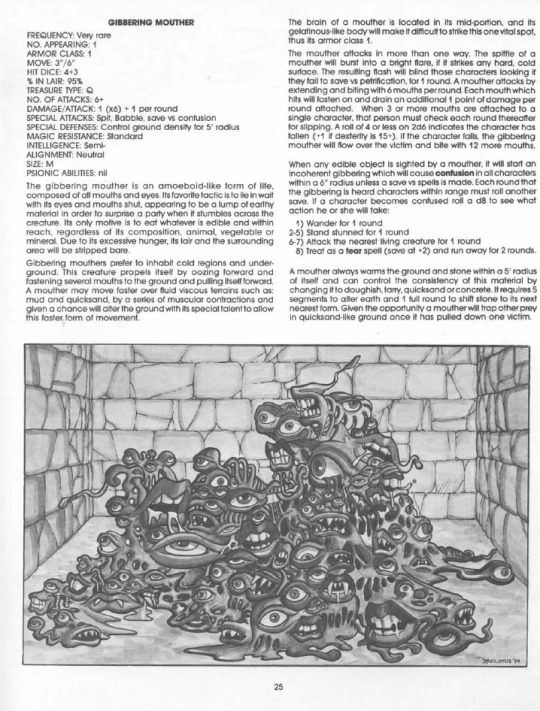
The party is stuck underground, inside a pyramid and goes from room to room in order to find freedom. In a kind of Haunted House style each room has a different danger and puzzle to fix in order to move on to the next one. Full of undead and even stranger things (the Gibbering Mouther makes his debut here, for example), the pyramid is really a temple complex, with different areas dedicated to different gods, both good, evil and neutral. Added to this setup are a bunch of really cool illustrations to help players visualise their surroundings. A fun adventure for sure.

2 notes
·
View notes
Text
Iconic AD&D art - Top 5
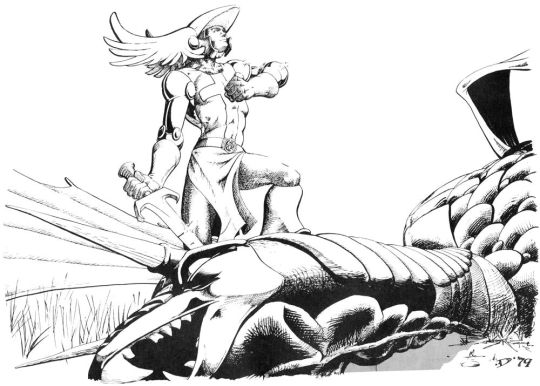
Jeff Dee, Paladin and Black Dragon, AD&D 1st edition Rogues Gallery

Russ Nicholson, Githyank and adventurers, AD&D 1st edition Fiend Folio

Erol Otus, Lolth, AD&D 1st edition Dungeon Module Q1

David C Sutherland III, ‘A Paladin in Hell’, AD&D 1st edition Players Handbook

David Trampier, ‘Emirikol the Chaotic’, AD&D 1st edition Dungeon Masters Guide
Explanation below the cut.
Obviously a list like this is highly subjective, and I should probably make it clear that by “iconic” I mean “iconic to me”, as these were a handful of the AD&D 1st edition illustrations that had a big impact on my experience with the game, and by extension, how I design characters and write adventures (for Dungeons & Dragons and beyond) to this day.
Some of my admittedly arbitrary criteria:
I made my picks from the books, modules and supplements that were on my shelves back in the day. Which isn’t a comprehensive list by any means. To me, the canon is the core three hardbacks (to this day, I think of Unearthed Arcana as new-fangled and the Survival Guides as niche products we didn’t use) plus Fiend Folio and Deities & Demigods; that run of modules that included the A, B, D, G, and S-series, plus a few others like C1 and Q1; and accessories including Rogues Gallery and the booklet of character sheets. That list is as arbitrary as it is inexhaustive.
I limited myself to black & white interior illustrations, meaning David Trampier’s superb cover for the Players Handbook was disqualified. I did it this way mostly because I felt it would be unfair to compare color paintings to ink drawings. I’m not sure if that’s true or not, but that’s how I did it. That said, had I allowed Tramp’s PH I’m actually thinking it might be the only color piece in there… The original Dungeon Masters Guide and Monster Manual covers never resonated with me to the same degree. Of the modules I included, there are three covers I really like, and they’re all by Erol Otus: A4, ‘In the Dungeons of the Slave Lords’; C1, ‘Hidden Shrine of Tamoachan’; and S3, ‘Expedition to the Barrier Peaks’. But they’re not quite iconic, somehow, in the sense that they’re too specific to the adventures they illustrate. In contract, the Players Handbook cover doesn’t tell you about someone else’s adventure, it inspires yours.
In the interest of a varied selection, I decided no one artist could be chosen more than once. This was basically to make sure Trampier and Jeff Dee didn’t crowd out other worthy illustrators.
My choices, in alphabetical order by last name:
Jeff Dee, Paladin and Black Dragon, Rogues Gallery, page 22. Paladins were always cool, and this drawing made them double extra cool. A lot of my peers complained that Dee’s characters all looked like super-heroes, and that they belonged in the pages of his Villains & Vigilantes. And that’s arguably true. But as a life-long reader of comics and V&V gamemaster, I didn’t mind at all. And that style is on display here: skintight plate and chain mail, aerodynamic helmet, and floppy fold-over Musketeer boots. But the pose is perfect, the dragon is superb, and the emotion of the paladin’s triumph shines. Jeff Dee did other illustrations that vied for his spot here: the “sci-fi Mind Flayer” and the Intellect Devourer stalking the party (both from ‘Expedition to the Barrier Peaks’), Icar holding flaming grease (frontispiece from Dungeon Module A2), and assorted entries in Deities & Demigods too numerous to mention.
Russ Nicholson, Githyanki fighting adventurers, Fiend Folio, page 45. Compared to the Monster Manual, which included so many creatures recognizable from myth and folklore, the Fiend Folio was weird. But the monsters that were cool immediately rivaled the classics, and the ones Russ Nicholson drew became my favorites. The Gith races were awesome from the get-go, and this illustration, supplementing the individual entries for the Githyanki and Githzerai, went a long way to inspiring us to put them in our dungeons. (I was so enamored of the Gith that I worked them into the origin story of a player character in the Villains & Vigilantes campaign I ran.) The adventurers here look outmatched, maybe, but they haven’t given up. We wondered what spell the Magic User was casting.
Erol Otus, Lolth frontispiece, Dungeon Module Q1, ‘Queen of the Demonweb Pits’: I love Erol Otus, but compared to Trampier and David Sutherland, his drawings could get wonky. Intentionally, I’m sure, but often his costumes and anatomy and such are a little far-fetched even for Dungeon & Dragons. (He loved horned helmets and loincloths, often on the same character.) This drawing of Lolth is great, in that it sets the stage for the adventure (in a way that Jim Rosloff’s cover doesn’t, honestly) and depicts Lolth as vampy without being overtly “sexy” like all the topless goddesses in Deities & Demigods. The demons here are especially good, with solid anatomy and dramatic lighting. This drawing is “so Erol Otus” without being “too Erol Otus”.
David C Sutherland III, ‘A Paladin in Hell’, Players Handbook, page 23. Unlike Trampier, who rarely missed, DCS was uneven: some of his drawings are classics, and many of them were mediocre then and just as mediocre now. ‘A Paladin in Hell’ is a classic, for several reasons. Firstly, it’s just really well drawn. Absent is the scratchy hatching that mars some of Sutherland’s work. Second, the paladin is perfect in the sense that he is believable; then and now I appreciate that fact that his armor is historically accurate and looks like suits I’d seen in museums. And third, the collected devils are all drawn to scale, showing their size the way Monster Manual spot illustrations don’t. Finally, the glow of the paladin, and what is surely a +5 Holy Avenger, is dazzling.
David Trampier, ‘Emirikol the Chaotic’, Dungeon Masters Guide, page 193. It’s difficult to see this drawing and not want to run a campaign set in the bustling capitol city of the Flanaess’ mightiest empire in which a villain Magic User is on a crime spree. (It’s the same feeling you get when you read any of Fritz Leiber’s stories set in Lankhmar. In fact, you want to go get the map they made for the AD&D supplement, including those awesome city geomorphs.) If Emirikol is the errant NPC, maybe the PCs are the adventurers stumbling out of the tavern into the exquisitely rendered (that hatching!) street to protect the innocent townsfolk being Magic Missiled. So who is Emirikol? He looks enough like Trampier that he could be one of many self-portraits sneaked into his AD&D artwork. (I’ve always wondered if he was Tramp’s PC in Gary Gygax’s Greyhawk campaign, though I’ve never gotten any indication that they actually gamed together.) This really cements Trampier’s stature; the Dee and Sutherland illustrations on this list evoke a single character or moment, while ‘Emirikol the Chaotic’ evokes an entire campaign. You don’t get more iconic than that.
#dungeons and dragons#D&D#AD&D#illustration#david trampier#david sutherland#jeff dee#erol otus#russ nicholson#brg
119 notes
·
View notes
Photo

Jason “Mock Man” Thompson’s walkthrough map of the classic D&D adventure C1 The Hidden Shrine of Tamoachan, originally posted on the Wizards of the Coast site.
3 notes
·
View notes
Conversation
DM: So you're going to the Shrine of Tamoachan-
Me: Tomato-chan?
DM: No-
Ken: Shrine of Tomato-chan, got it.
DM: *heavy sigh*
74 notes
·
View notes
Text

🇲🇽Luego dijeron: “han nacido los vasallos de los dioses”. Por cuanto hicieron penitencia sobre nosotros. Otra vez dijeron: “¿Qué comerán, oh dioses? Ya todos buscan el alimento”. Luego fue la hormiga a coger el maíz desgranado dentro del Tonacatépetl. Encontró Quetzalcóhuatl a la hormiga y le dijo: “Dime adónde fuiste a cogerlo”. Muchas veces le pregunta; pero no quiere decirlo. Luego le dice que allá, señalando el lugar y la acompañó. Quetzalcóhuatl se volvió hormiga negra, la acompañó, y entraron y lo acarrearon ambos: esto es, Quetzalcóhuatl acompañó a la hormiga colorada hasta el depósito, arregló el maíz y en seguida lo llevó a Tamoanchan. Lo mascaron los dioses y lo pusieron en nuestra boca para robustecernos.
🇺🇸Then they said: “the servants of the gods was born”. They do penitence to us. The gods said again: “what will they eat?” They are serching food”. Then the ant went for the corn inside the Tonacatepetl. Quetzalcoatl found the ant and he said:”tell me where did you go to pick it up”, but the ant no wants to tell him, then the ant tells him where found it and it accompanied him. Quetzalcoatl turned into a black ant and together went for the corn, Quetzalcoatl took it to Tamoachan, the gods chewed it, then they put it on our mouths.
Matos Moctezuma, Eduardo, “Festividades practicadas del lado de Tláloc”, Arqueología Mexicana.
#quetzalcoatl #maiz #mexica #prehispanico #prehispanic #corn #mexico #ilustracion #mexicanillustrator #ilustracionmexicana #illustration #prehispanicart #art #primavera #spring
4 notes
·
View notes
Photo

Sweet Chocolate Kelly @semaj_de_la_soul • • • • • • Guana Reserve Beach Itzpapalotl Per the Aztec Calendar Itzpapalotl is the Obsidian Butterfly or Clawed Butterfly, the Feminine Warrior. Itzpapalotl stands for purfication or rejuvenation by sacrifice of that what is precious. Model: Sweet Chocolate Kelly Photog: @semaj_de_la_soul @black_models_unite Itzpapalotl is often depicted as a skeletal being with jaguar claws and wings edged by obsidian knifes. She is one of the Tzitzimime, the powerful and dangerous star daemons. With other female deities like the Cihuateteo , Tlaltecuhtli , Coatlicue , Citlalicue and Cihuacoatl , the Tzitzimime are protectors of midwives and women in labor. Itzpapalotl rules over Tamoachan, the heaven where the gods created the human race. Tamoachan is the home for the victims of infant mortality. Here grows the Suckling Tree which bears 400,000 nipples. In this place the children can comfortably regain strength for re-incarnation. In the tonalpohualli, Itzpapalotl rules over day Cozcacuauhtli (knife) and over trecena 1-Calli (house). . . . #Repost . . #blackmodelsunite https://www.instagram.com/p/CLhb3qUnL9x/?igshid=6eur2y4fy7rs
1 note
·
View note